
Urho Kaleva Kekkonen, often referred to by his initials UKK, was a Finnish politician who served as the eighth and longest-serving president of Finland from 1956 to 1982. He also served as prime minister, and held various other cabinet positions. He was the third and most recent president from the Agrarian League/Centre Party. Head of state for nearly 26 years, he dominated Finnish politics for 31 years overall. Holding a large amount of power, he won his later elections with little opposition and has often been classified as an autocrat.

Eugene Joseph McCarthy was an American politician, writer, and academic from Minnesota. He served in the United States House of Representatives from 1949 to 1959 and the United States Senate from 1959 to 1971. McCarthy sought the Democratic presidential nomination in the 1968 election, challenging incumbent Lyndon B. Johnson on an anti-Vietnam War platform. McCarthy unsuccessfully ran for U.S. president four more times.

Antiochus X Eusebes Philopator was a Seleucid monarch who reigned as King of Syria during the Hellenistic period between 95 BC and 92 BC or 89/88 BC. He was the son of Antiochus IX and perhaps his Egyptian wife Cleopatra IV. Eusebes lived during a period of general disintegration in Seleucid Syria, characterized by civil wars, foreign interference by Ptolemaic Egypt and incursions by the Parthians. Antiochus IX was killed in 95 BC at the hands of Seleucus VI, the son of his half-brother and rival Antiochus VIII. Antiochus X then went to the city of Aradus where he declared himself king. He avenged his father by defeating Seleucus VI, who was eventually killed.

Philip I Epiphanes Philadelphus was a Hellenistic Seleucid monarch who reigned as the king of Syria from 94 to either 83 or 75 BC. The son of Antiochus VIII and his wife Tryphaena, he spent his early life in a period of civil war between his father and his uncle Antiochus IX. The conflict ended with the assassination of Antiochus VIII; Antiochus IX took power in the Syrian capital Antioch, but soon fell in battle with Antiochus VIII's eldest son Seleucus VI.

Antiochus XI Epiphanes Philadelphus was a Seleucid monarch who reigned as King of Syria between 94 and 93 BC, during the Hellenistic period. He was the son of Antiochus VIII and his wife Tryphaena. Antiochus XI's early life was a time of constant civil war between his father and his uncle Antiochus IX. The conflict ended with the assassination of Antiochus VIII, followed by the establishment of Antiochus IX in Antioch, the capital of Syria. Antiochus VIII's eldest son Seleucus VI, in control of western Cilicia, marched against his uncle and had him killed, taking Antioch for himself, only to be expelled from it and driven to his death in 94 BC by Antiochus IX's son Antiochus X.

Boleslaus II the Pious, a member of the Přemyslid dynasty, was Duke of Bohemia from 972 until his death in 999.
In political campaigns, an attack ad is an advertisement designed to wage a personal attack against an opposing candidate or political party in order to gain support for the attacking candidate and attract voters. Attack ads often form part of negative campaigning or smear campaigns, and in large or well-financed campaigns, may be disseminated via mass media.

The financing of electoral campaigns in the United States happens at the federal, state, and local levels by contributions from individuals, corporations, political action committees, and sometimes the government. Campaign spending has risen steadily at least since 1990. For example, a candidate who won an election to the House of Representatives in 1990 spent on average $407,600, while the winner in 2022 spent on average $2.79 million; in the Senate, average spending for winning candidates went from $3.87 million to $26.53 million.
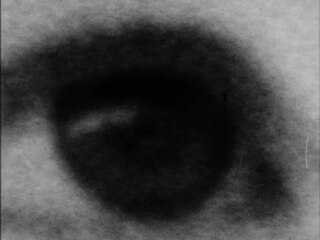
In politics, campaign advertising is propaganda through the media to influence a political debate and, ultimately, Voting. Political consultants and political campaign staff design these ads. Many countries restrict the use of broadcast media to broadcast political messages. In the European Union, many countries do not permit paid-for TV or radio advertising for fear that wealthy groups will gain control of airtime, making fair play impossible and distorting the political debate.
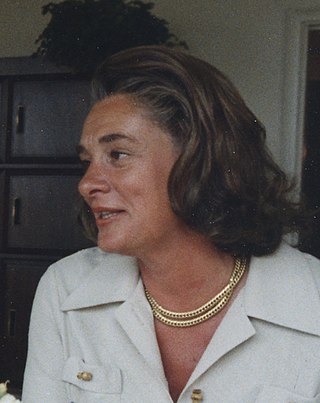
Margaretta Large "Happy" Rockefeller was a philanthropist who, as the wife of vice president Nelson Rockefeller, served as second lady of the United States from 1974 to 1977. She was previously the first lady of New York from 1963 to 1973, during her husband's last three terms in office.

Charlene Alexander Mitchell was an American international socialist, feminist, labor and civil rights activist. In 1968, she became the first Black woman candidate for President of the United States.
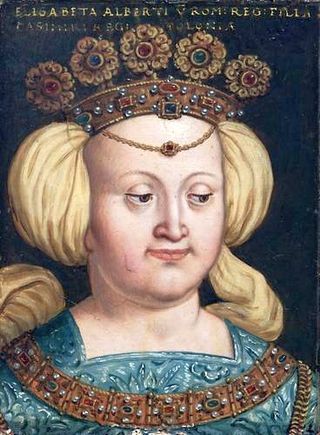
Elizabeth of Austria was Queen of Poland and Grand Duchess of Lithuania as the wife of King Casimir IV of Poland. Orphaned at an early age, she spent her childhood in the court of Holy Roman Emperor Frederick III. As one of the three surviving grandchildren of Emperor Sigismund, she had a strong claim to the kingdoms of Hungary and Bohemia. That made her an attractive bride for a Polish prince. The Polish nobility, seeking to increase Polish influence in Hungary and Bohemia, pursued marriage with Elizabeth since she was born and finally succeeded in 1454. Her marriage to Casimir was one of the most successful royal marriages in Poland. She gave birth to thirteen children, eleven of whom survived to adulthood. Four of her sons were crowned as kings.

A campaign button is a pin used during an election as political advertising for a candidate or political party, or to proclaim the issues that are part of the political platform. In the United States, political buttons date as far back as President George Washington. They have taken many forms as the technology to create an image and mass production has allowed. In the late 18th and first half of the 19th century they were sewn-on clothing buttons, whereas the modern forms typically have pins on the back and are therefore also called pin-back buttons.
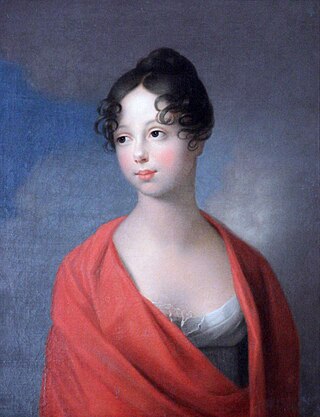
Catherine Pavlovna of Russia was Queen of Württemberg from 30 October 1816 until her death in 1819 as the wife of William I of Württemberg.

Joe Biden, the 46th and current president of the United States, has family members who are prominent in law, education, activism and politics. Biden's immediate family became the first family of the United States on his inauguration on January 20, 2021. His immediate family circle was also the second family of the United States from 2009 to 2017, when Biden was vice president. Biden's family is mostly descended from the British Isles, with most of their ancestors coming from Ireland and England, and a smaller number descending from the French.
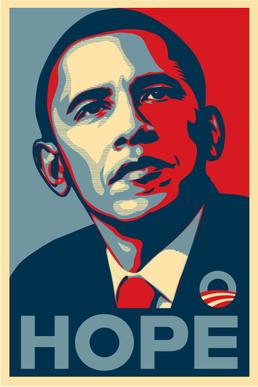
The Barack Obama "Hope" poster is an image of US president Barack Obama designed by American artist Shepard Fairey. The image was widely described as iconic and came to represent Obama's 2008 presidential campaign. It is a stylized stencil portrait of Obama in solid red, beige and blue, with the word "progress", "hope", or "change" below.

The election of the president and the vice president of the United States is an indirect election in which citizens of the United States who are registered to vote in one of the fifty U.S. states or in Washington, D.C., cast ballots not directly for those offices, but instead for members of the Electoral College. These electors then cast direct votes, known as electoral votes, for president, and for vice president. The candidate who receives an absolute majority of electoral votes is then elected to that office. If no candidate receives an absolute majority of the votes for president, the House of Representatives elects the president; likewise if no one receives an absolute majority of the votes for vice president, then the Senate elects the vice president.
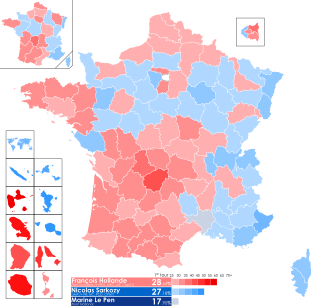
Presidential elections were held in France on 22 April 2012, with a second round run-off held on 6 May to elect the President of France. The incumbent Nicolas Sarkozy was running for a second five-year term for which he was eligible for under the Constitution of France.

Fatemeh Karroubi is an Iranian politician and activist. She is the wife of Mehdi Karroubi, a politician, Shia cleric, chairman of the National Trust Party and a candidate for President of Iran during the 2005 and 2009 presidential elections. Fatemeh Karroubi campaigned openly with her husband during the 2009 presidential campaign, drawing comparisons to another high-profile political spouse, Zahra Rahnavard, the wife of Mir Hossein Mousavi. Candidates campaigning openly with their wives had previously been a rare occurrence within the Islamic Republic of Iran since the 1979 Iranian Revolution.
Hake, Ted: Guide to Presidential Campaign Collectibles, Krause Publications, 1991, p. 175
Wert, H. E.:Hanging Around Us in Plain Sight: The Great American Political Campaign Poster, 1844–2012, 2016

























